Hyperglycemia is a condition of elevated blood sugar. The symptoms of overdiagnosis depend on the level of glycemia. Untreated hyperglycemia leads to severe complications. It is as dangerous a condition as hypoglycemia, although its symptoms are not always characteristic. The initial symptoms of hyperglycemia include frequent urination and a persistent feeling of thirst, often resulting in dehydration. However, these symptoms may not always be present.
In some cases, patients with chronic hyperglycemia experience various bodily changes that impact the functioning of internal organs. Hyperglycemia is a term commonly used in the context of diabetes and its treatment. Precisely, the goal of diabetes treatment is to prevent hyperglycemia because it leads to the development of severe health complications. To control sugar levels, people with diabetes use insulin, oral medications, and a special diet and constantly monitor glucose levels.
Hyperglycemia is called serum glucose levels that exceed the upper limit of normal. The condition is associated with a disorder of insulin secretion or action and is the basis for the diagnosis of diabetes. Here are the norms about blood glucose levels, which are used to distinguish the state of hyperglycemia from ordinary:

Fasting glucose refers to the measurement taken after a minimum 8-hour period without consuming foods or beverages containing carbohydrates. On the other hand, blood sugar levels rise after a meal, and this is a normal process if it does not exceed the set standards. The concentration of glucose, or blood sugar, is regulated by hormones, mainly insulin.
After eating, the breakdown of glucose begins, so already after pk. 10-15 minutes after a meal, there is an increase in sugar concentration. A high sugar level after a meal can indicate diabetes, while a drop in sugar after eating can affect people with diabetes as well as healthy people.
Abnormal glucose tolerance resulting in hyperglycemia is a warning condition for diabetes. Hyperglycemia values are slightly lower than in diabetes but should prompt appropriate steps to prevent the disease. Glucose intolerance can develop at any age. All patients with abnormal glucose tolerance have an increased possibility of developing conditions like cardiovascular disease, type 2 diabetes.
Glucose intolerance![]() – This term describes a characteristic disorder of carbohydrate metabolism that results in elevated glucose levels. In glucose intolerance, unlike in the case of food intolerance of other sugars such as lactose, digestion and absorption of glucose from the lumen of the small intestine remains completely normal. Defects in cellular resistance to insulin action and insulin secretion by the pancreas are, therefore, the causes of impaired glucose tolerance.
– This term describes a characteristic disorder of carbohydrate metabolism that results in elevated glucose levels. In glucose intolerance, unlike in the case of food intolerance of other sugars such as lactose, digestion and absorption of glucose from the lumen of the small intestine remains completely normal. Defects in cellular resistance to insulin action and insulin secretion by the pancreas are, therefore, the causes of impaired glucose tolerance.
If left untreated, the pre-diabetic state can worsen over time until it leads to full-blown type two diabetes. The pre-diabetic state can consist of both abnormal glucose tolerance and abnormal fasting glucose. In both cases, there are elevated blood glucose values, but the exact pathomechanism of these deviations differs. Adequate early recognition of the pre-diabetic state enables the implementation of appropriate treatment, which can effectively prevent the development of diabetes. Glucose intolerance can develop at any age.
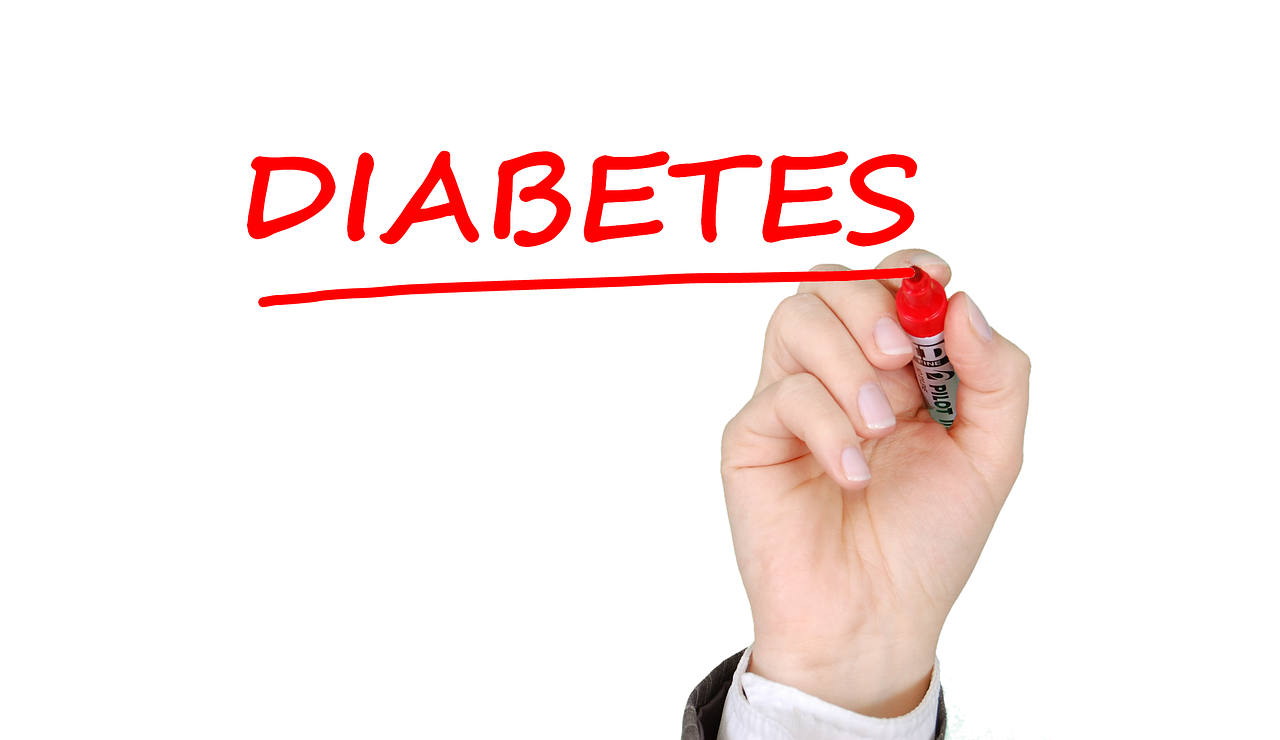
In diabetes, an elevated blood sugar level or hyperglycemia is observed, resulting from improper production or malfunction of insulin. Type 1 and type 2 diabetes are conditions with high blood glucose levels. Both types require constant control and appropriate management, which can lead to systemic complications jeopardizing the patient's health. However, the causes, symptoms, and treatment methods for each type of diabetes differ.
Type 1 diabetes – Type 1 diabetes, an autoimmune disease![]() , has genetic factors that likely contribute significantly. It occurs when the pancreas cells responsible for insulin production are destroyed, resulting in insufficient insulin levels. Consequently, the body struggles to metabolize sugars. Therefore, in the course of the disease, there is an excessive sugar concentration in the blood. A person with the disease has no control over the malfunctioning of the immune system and the development of type 1 diabetes.
, has genetic factors that likely contribute significantly. It occurs when the pancreas cells responsible for insulin production are destroyed, resulting in insufficient insulin levels. Consequently, the body struggles to metabolize sugars. Therefore, in the course of the disease, there is an excessive sugar concentration in the blood. A person with the disease has no control over the malfunctioning of the immune system and the development of type 1 diabetes.
Type 2 diabetes – This type of disease is characterized more by improper lifestyle and eating habits. Type 2 diabetes reduces the production of insulin, and in addition, the body's cells become resistant to the hormone, so the process of carbohydrate metabolism is significantly impaired. Type 2 diabetes is the disease most often associated with adults, but it is increasingly observed that children can also get the disease. This type of diabetes is often referred to as a disease of civilization since environmental factors![]() contribute to its development.
contribute to its development.
Normal blood sugar levels indicate good health and well-being. Unfortunately, many people struggle with elevated glucose levels due to poor diet and lack of physical activity, which can lead to disease. Hyperglycemia can refer to abnormal fasting glucose, standard glucose tolerance, or diabetes.
It's important to note that when measuring glucose after a meal, sugar levels can vary based on the type of food consumed, even if it doesn't necessarily contain sugars. The composition of food, including the fat content and range of different kinds of sugar, has significant implications for metabolism.
Fasting hyperglycemia can be caused by various factors. These include diabetes or pre-diabetes, under-dosing basal insulin, injecting it incorrectly, insufficient mixing, or administering it at the wrong time. The exact cause of glucose intolerance remains unclear. However, the most well-supported theory suggests that it is influenced by a combination of genetic predisposition, epigenetic factors, and environmental conditions like a sedentary lifestyle, obesity, and poor eating habits.
Thus, likely causes of hyperglycemia include:
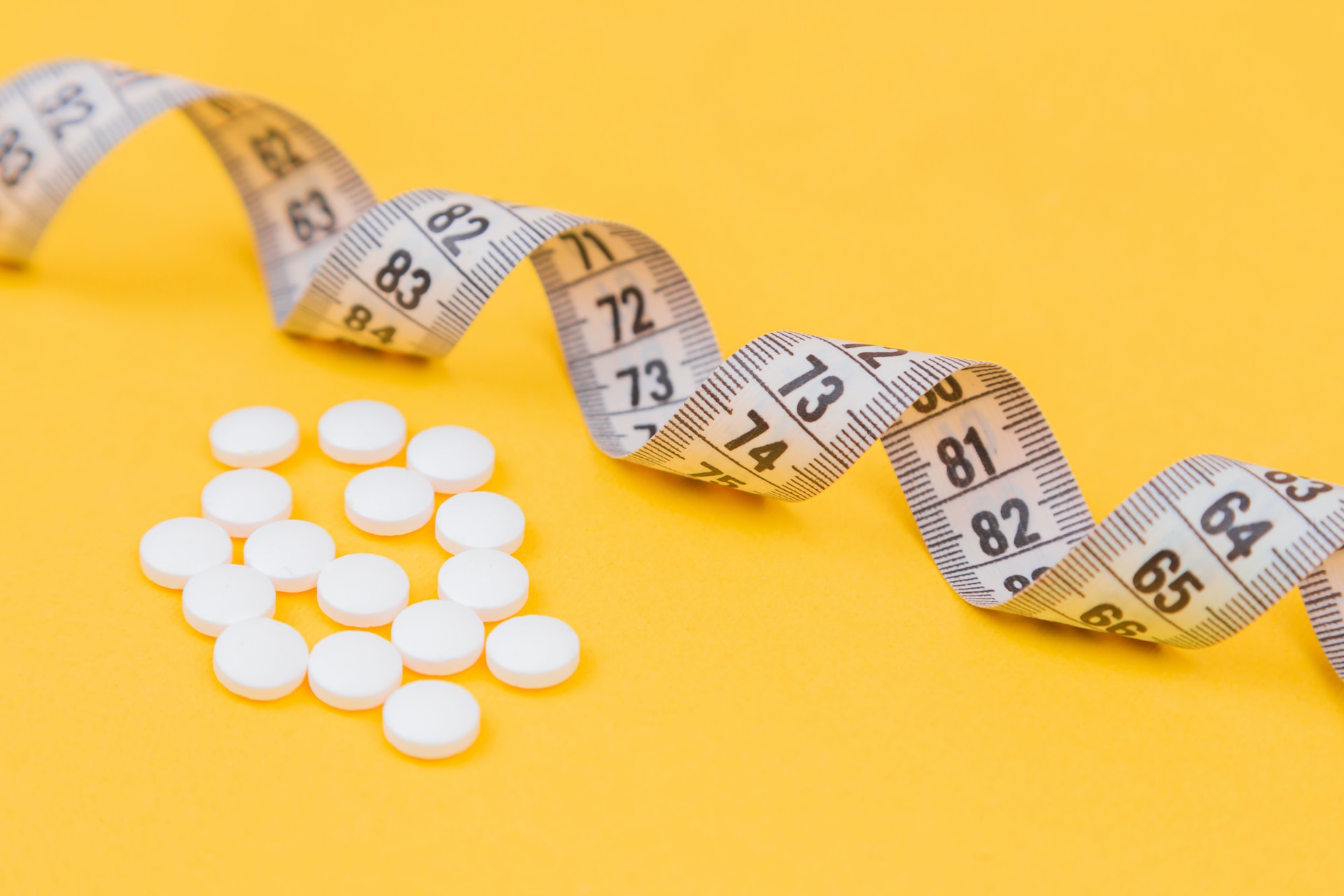
Unhealthy diet – Unhealthy diets, characterized by low fiber content and a high intake of foods with a high glycemic index, significantly increase the risk of hyperglycemia. Moreover, regardless of one's weight, saturated fat consumption contributes to the development of diabetes. This explains why young and thin people are also increasingly dependent on insulin. In addition, excessive consumption of alcohol![]() can contribute to hyperglycemia and, therefore, diabetes. Too much alcohol in the diet very often coexists with excessive caloric intake and overweight or obesity, which leads to the development of insulin resistance and sugar intolerance.
can contribute to hyperglycemia and, therefore, diabetes. Too much alcohol in the diet very often coexists with excessive caloric intake and overweight or obesity, which leads to the development of insulin resistance and sugar intolerance.
Obesity – It is indicated that the primary cause of obesity is an unbalanced balance between energy intake with food and energy consumption, i.e., for example, eating too many meals with too little physical activity. However, the causes are only sometimes due to improper diet and lifestyle. It has been noted, however, that the most critical factor in hyperglycemia is obesity![]() . Excessive body weight can cause insulin resistance, and in addition, when the patient does not change his lifestyle, it significantly worsens the course of the disease.
. Excessive body weight can cause insulin resistance, and in addition, when the patient does not change his lifestyle, it significantly worsens the course of the disease.
Lack of physical activity – Lack of physical activity can lead to hyperglycemic states, which are associated with an unhealthy lifestyle. People with diabetes should especially prioritize physical activity as it helps regulate blood glucose levels. Engaging in more intense body movements can effectively utilize glucose, thereby impacting its balance and concentration in the bloodstream. Regular physical activity is good for glucose metabolism in the body. No drug reduces insulin resistance like regular physical activity.
Insulin resistance – This reduction in the sensitivity of target tissues to insulin is a metabolic disorder that precedes the diagnosis of diabetes. Insulin resistance usually occurs in genetically predisposed individuals, with the coexistence of such environmental factors as an unhealthy diet rich in fat and simple sugars, abdominal obesity, and low physical activity. Reduced sensitivity to insulin, despite normal or elevated blood levels, causes the body to start producing the hormone in excessive amounts.
Diseases – Various diseases can also contribute to hyperglycemia. For instance, certain pancreatic conditions can disrupt insulin production, resulting in the development of high blood sugar levels. Pancreatic diseases![]() often have multifactorial causes. Such diseases often result from damage caused by harmful external factors but can also have genetic causes.
often have multifactorial causes. Such diseases often result from damage caused by harmful external factors but can also have genetic causes.
Pregnancy – During pregnancy![]() , hormones that oppose insulin increase significantly in pregnant women. The pancreas struggles to meet the increased demand for insulin, leading to insulin resistance and high blood sugar levels. If gestational diabetes is diagnosed, dietary changes or insulin therapy may be recommended.
, hormones that oppose insulin increase significantly in pregnant women. The pancreas struggles to meet the increased demand for insulin, leading to insulin resistance and high blood sugar levels. If gestational diabetes is diagnosed, dietary changes or insulin therapy may be recommended.
Undiagnosed type 1 diabetes – Undiagnosed type 1 diabetes is caused by an autoimmune process in which the body's cells are spontaneously destroyed. This process specifically targets the beta cells within the pancreatic islands responsible for insulin production. As a consequence, the pancreas loses its ability to produce insulin. The disease is characterized by hyperglycemia, that is, elevated blood glucose levels.
People diagnosed with diabetes may experience fluctuations in blood sugar levels. Therefore, in people with diagnosed diabetes, various causes can increase sugar levels. These include the following reasons for hyperglycemia:

Insufficient drug dosage – Too little medication can have negative effects on individuals with diabetes. They may experience hyperglycemia, a condition that arises from insufficient medication. Moreover, skipping a dose of medicine can also contribute to this issue. It's important to note that diabetes therapy comprises various drugs from different therapeutic groups, each functioning in distinct ways to lower glycemia. Decisions regarding the introduction of specific drugs at different stages of treatment are determined by doctors based on tests conducted.
Unhealthy lifestyle – In individuals with diabetes, an unhealthy lifestyle can contribute to hyperglycemia, which is characterized by elevated blood sugar levels. Consuming excessive amounts of carbohydrates in one's diet is a common cause for this condition. Specifically, the type of carbohydrates consumed plays a significant role. It is advisable to minimize or completely avoid simple carbohydrates. Additionally, insufficient physical activity can have detrimental effects on the well-being of individuals with diabetes and can also intensify their symptoms.
Infections and illnesses – People with diabetes who become ill with another disease or catch an infection may experience hyperglycemic states more frequently. Comorbidities or inflammation are unfortunately common in people with diabetes. Diabetic patients are more likely to have purulent conjunctivitis, barley, chalazion, and eyelid rim inflammation than the general population. Not only hyperglycemia predisposes to infections.
Endocrine disorders – Stress hormones such as cortisol and epinephrine increase blood sugar levels because, under their influence, the liver releases glucose into the body. Glucose is released to defend against the stressor. Therefore, endocrine disorders accompanying diabetes can affect sugar levels.
Symptoms of hyperglycemia are not always typical and easy to recognize. This is because their presence and severity depend on the type and dynamics of diabetes. Often, they are varied and uncharacteristic, and in the case of type 2 diabetes, for a long time, they do not occur at all, and the disease can be completely asymptomatic. Such long-term and unnoticed hyperglycemia insidiously promotes the development of chronic complications. Type 1 diabetes is characterized by a more violent course and sudden onset.
Symptoms of hyperglycemia include:

Frequent urination – One of the characteristic habits associated with increased sugar levels is frequent urination![]() , especially at night. This also results in the need to drink more water. In people with hyperglycemia, the kidneys have to work more intensively to remove excess glucose from the body, which accumulates in the urine. To remove it, more often than not, the patient has to use the toilet.
, especially at night. This also results in the need to drink more water. In people with hyperglycemia, the kidneys have to work more intensively to remove excess glucose from the body, which accumulates in the urine. To remove it, more often than not, the patient has to use the toilet.
Headaches – Headaches can be triggered by consuming sweets, as they cause a significant rise in sugar levels followed by a sharp drop. This fluctuation in glucose levels can worsen headaches. Moreover, low blood sugar levels can also manifest as headaches. Consequently, individuals with diabetes often experience frequent headaches due to these fluctuations in glucose levels.
Visual disturbances – Visual disturbances can occur due to fluctuations in blood glucose levels, leading to changes in the lens and affecting vision. Both low and high blood sugar levels can cause visible defects and worsen eyesight. In addition, diabetes can damage the eye's tiny blood vessels, resulting in retinal damage. While initially unnoticed, this can gradually lead to visual impairment and, if left untreated, even vision loss.
Fatigue and lethargy – People with high blood sugar levels often experience sudden fatigue and lethargy![]() . They may feel excessively sleepy, lacking energy, which are among the initial signs of diabetes. Elevated glucose levels prevent the body from effectively using glucose for energy and work. Symptoms tend to worsen after consuming a meal, particularly one rich in carbohydrates. Furthermore, individuals with hyperglycemia may also experience concentration difficulties and a general sense of malaise.
. They may feel excessively sleepy, lacking energy, which are among the initial signs of diabetes. Elevated glucose levels prevent the body from effectively using glucose for energy and work. Symptoms tend to worsen after consuming a meal, particularly one rich in carbohydrates. Furthermore, individuals with hyperglycemia may also experience concentration difficulties and a general sense of malaise.
Weight loss – Large and sudden weight loss![]() is a common symptom of hyperglycemia and type 2 diabetes. This occurs because insulin production decreases and the body's ability to store glucose in cells is reduced. Despite the presence of excess glucose in the blood, the body is unable to utilize it due to low levels of insulin. As a result, cells are triggered to burn fat and muscle tissue for energy. This process of utilizing stored resources helps explain the significant weight loss experienced in these conditions.
is a common symptom of hyperglycemia and type 2 diabetes. This occurs because insulin production decreases and the body's ability to store glucose in cells is reduced. Despite the presence of excess glucose in the blood, the body is unable to utilize it due to low levels of insulin. As a result, cells are triggered to burn fat and muscle tissue for energy. This process of utilizing stored resources helps explain the significant weight loss experienced in these conditions.
Dehydration – High blood glucose levels can result from dehydration. When the body lacks sufficient fluids, it leads to increased blood glucose levels, which can cause issues with blood vessels in the eyes, kidneys, and heart. Abnormal blood sugar levels trigger the body to eliminate excess glucose, activating the thirst center and boosting renal filtration. Therefore, not drinking enough fluids throughout the day can raise blood glucose levels. Dehydration can be identified by symptoms such as dry skin, dry mucous membranes, and a decrease in skin tone and elasticity.
Frequent infections – People with hyperglycemia are prone to purulent skin infections and impaired wound healing. In addition, there is also a propensity for genitourinary disorders, especially fungal vaginal infections in women. Yeast under the influence of high sugar levels multiplies quickly, resulting in intimate conditions. In addition, elevated glucose levels contribute to the presence of protein in the urine. This situation also accounts for the occurrence of recurrent urinary tract infections.
Cold limbs – Cold limbs occur when blood sugar levels are high and lead to inflammatory processes that damage arterial walls. This damage stimulates the production of substances that cause vascular cells to thicken. As a result, diabetes and its complications can sometimes cause cold hands and feet. This increased risk of heart disease and arteriosclerosis is due to impaired blood circulation, which is a common symptom of diabetes. People with hyperglycemia may experience pain, insensitivity to stimuli, and coldness in their hands and feet.
Gastrointestinal problems – Hyperglycemic states can lead to a decrease in gastric fundus contractions, slow peristaltic action, irregular rhythmic patterns, and desynchronization of gastric function. As a result, high sugar levels can cause discomforting symptoms like heartburn, reflux, erosions, and impaired bowel function. These gastrointestinal issues are especially aggravated after meals due to dietary errors.
Ketoacidosis – Ketoacidosis![]() occurs when very high sugar levels, i.e., above 250 mg/dl, persist for several hours. Ketoacidosis can occur in the course of any diabetes, in situations of increased need for insulin. It should be considered a life-threatening condition. However, it should be remembered that not every increase in blood glucose concentration leads to ketoacidosis.
occurs when very high sugar levels, i.e., above 250 mg/dl, persist for several hours. Ketoacidosis can occur in the course of any diabetes, in situations of increased need for insulin. It should be considered a life-threatening condition. However, it should be remembered that not every increase in blood glucose concentration leads to ketoacidosis.

Hyperglycemia first requires proper diagnosis. Excessively high fasting or post-meal sugar levels can lead to diabetes or pre-diabetes. Testing blood sugar levels is a simple test that needs to be done first. If diabetes is suspected, further tests will be necessary. Tests in diagnosing hyperglycemia include:
The appearance of glucose in the urine indicates a high level of glucose in the blood and that the so-called renal threshold has been exceeded. Still, the cause of glucosuria may also be dysfunction of the renal tubule structures, which contributes to an increase in glucose concentration in the urine, with a standard concentration of glucose in the plasma. Determination of glucose in urine alone does not give a diagnosis of diabetes but is an indication for further diagnostics.
If fasting glucose is abnormal, a glucose tolerance test, or OGTT![]() , is performed. Other tests that can assist in diagnosing and distinguishing between different types of diabetes and evaluating the pancreatic function include analyzing the presence of ketone bodies in urine, testing for autoantibodies targeting pancreatic cells, as well as measuring insulin and C-peptide levels. These tests are valuable in providing comprehensive insights into the condition and the secretory capabilities of the pancreas.
, is performed. Other tests that can assist in diagnosing and distinguishing between different types of diabetes and evaluating the pancreatic function include analyzing the presence of ketone bodies in urine, testing for autoantibodies targeting pancreatic cells, as well as measuring insulin and C-peptide levels. These tests are valuable in providing comprehensive insights into the condition and the secretory capabilities of the pancreas.
The test involves determining glucose levels one hour after drinking a glass of water with glucose. Blood is first drawn on an empty stomach, then one hour after ingesting glucose, and two hours after drinking glucose. It is an essential element in the diagnosis of diabetes, gestational diabetes, and other disorders of carbohydrate metabolism.
Before the test is scheduled, dietary habits should remain the same. The amount of carbohydrates consumed in the three days preceding the test should remain at the patient's average level. Significantly reducing their amount in the diet may cause the test result to be ambiguous and unreliable. It is also essential to inform the referring doctor about the medications you are taking.
In most cases, the treatment of hyperglycemia relies on the disease's severity. For mild instances, making lifestyle changes, particularly in eating habits, may suffice. However, if diabetes is diagnosed, treatment can become more complex and will vary depending on the individual patient. Treatments for hyperglycemia include:

Diet – In long-term treatment, individuals are encouraged to adopt a healthy, low-carbohydrate diet. This dietary change can prove to be sufficient for patients whose results align with the norm and who maintain adequate nutrition to regulate their sugar levels. However, specialized treatment may be necessary in specific cases. For expectant mothers, following an appropriate diet and monitoring blood sugar levels after meals is typically enough. It is important for the diet to include a balance of complex carbohydrates, protein, and healthy fats.
Drug treatment – Drug treatment involves adjusting medication based on the patient's condition. For individuals with diabetes, it is essential to take anti-diabetic drugs or insulin at the appropriate doses and timings. Diabetes therapy uses drugs from different therapeutic groups. They are all designed to lower glycemia, but they work in different ways. Medications like m*******n![]() can enhance tissue sensitivity to natural insulin, whereas sulfonylurea derivatives work by stimulating insulin secretion from the pancreas. Another example is phenazines, which aid in safely eliminating excess sugar through urine.
can enhance tissue sensitivity to natural insulin, whereas sulfonylurea derivatives work by stimulating insulin secretion from the pancreas. Another example is phenazines, which aid in safely eliminating excess sugar through urine.
Insulin injection – Insulin injection plays a crucial role in treating severe hyperglycemia. The administration of insulin can be done intravenously or subcutaneously, providing necessary first aid. Hospitalization is typically required after insulin administration. Insulin therapy is widely used to treat diabetes, as it is a hormone produced in organs like the pancreas, which helps regulate blood glucose levels. Subcutaneously administered insulin aids in glycemic control and brings significant improvements to overall health. While crucial for diabetes treatment, it's important to note that insulin may cause side effects. Generally, patients receive insulin injections 2-4 times a day to manage their condition effectively.
Insulin pump – The most effective and natural treatment for type 1 diabetes is the use of an insulin pump. The main indications for it are difficulty in balancing diabetes with multiple insulin injections and morning hyperglycemia. An insulin pump is a electronic apparatus that allows people with diabetes to take care of normal blood glucose levels. This electronic device allows individuals to easily program their basal insulin dose, eliminating the need for manual calculations. Equipped with a reservoir filled with insulin, the pump delivers the hormone through a slender and flexible tube, which is inserted subcutaneously for a seamless treatment experience.
Intravenous hydration – Hydration is essential, especially when blood sugar rises very high. Treatment of ketoacidosis involves rehydrating the patient with NaCl solution and administering insulin. Also, adequate hydration is an essential part of the daily diet in diabetic patients. The consequences of inadequate hydration are far worse than in healthy people. Dehydration increases blood glucose levels, which leads to damage to blood vessels in the heartm kidneys, eyes.
The condition that is opposite to hyperglycemia is called hypoglycemia![]() . Hyperglycemia refers to a state where the glucose level in the blood exceeds the standard levels. Conversely, hypoglycemia occurs when the blood sugar levels drop too low.
. Hyperglycemia refers to a state where the glucose level in the blood exceeds the standard levels. Conversely, hypoglycemia occurs when the blood sugar levels drop too low.
Hypoglycemia – Hypoglycemia is a condition characterized by a significant and pathological decrease in glucose levels in the patient's blood. Currently, it is diagnosed when the blood glucose levels drop below 70 mg/dl. Insufficient glucose in the bloodstream leads to impaired organ functions and the development of disease symptoms. Prolonged and severe hypoglycemia can pose a serious threat to the patient's health and even their life. Hypoglycemia can occur both in the course of certain diseases and as a result of the effects of certain drugs or toxic substances on the body.

The most common development of hypoglycemia occurs in people with diabetes. During this disease, the body cannot effectively utilize the glucose supplied with food, leading to hyperglycemia, i.e., an excessive amount of sugar in the blood. The treatment for certain forms of diabetes involves using insulin and other medications to decrease the glucose concentration in the bloodstream.
When experiencing hypoglycemia, blood sugar levels dip too low, resulting in symptoms like sweating, trembling, feeling hungry, and even unconsciousness. To effectively prevent the development of hypoglycemia, people being treated for diabetes should strictly follow their doctor's instructions related to medication and proper diet.
Elevated blood sugar levels are, among other things, a consequence of an improper diet rich in simple sugars and excessive carbohydrates. The diet of individuals in this category may lack balance, resulting in high blood glucose levels. Are you wondering what foods can effectively lower elevated sugar levels and prevent further health risks?
Vegetables – For individuals with high blood glucose levels, it is crucial to prioritize a diet rich in vegetables![]() . Vegetables form the cornerstone of their meals, offering essential nutrients to combat elevated sugars. Opting for raw vegetables is recommended as they have a slower impact on blood sugar compared to overcooked ones. Furthermore, vegetables and vegetable juices are excellent sources of dietary fiber
. Vegetables form the cornerstone of their meals, offering essential nutrients to combat elevated sugars. Opting for raw vegetables is recommended as they have a slower impact on blood sugar compared to overcooked ones. Furthermore, vegetables and vegetable juices are excellent sources of dietary fiber![]() , aiding in the regulation of blood sugar levels. Specifically, cucumbers, zucchini, and spinach are highly recommended.
, aiding in the regulation of blood sugar levels. Specifically, cucumbers, zucchini, and spinach are highly recommended.
Grain products – A diet with high blood sugar levels should be rich in grain products![]() . This is a staple in the menus of people at increased risk of diabetes. Cereal products contain, among other things, B vitamins, which have a significant influence on the metabolism of carbohydrates. It is best to replace cereal made of white flour with whole-grain products.
. This is a staple in the menus of people at increased risk of diabetes. Cereal products contain, among other things, B vitamins, which have a significant influence on the metabolism of carbohydrates. It is best to replace cereal made of white flour with whole-grain products.
Avoiding simple sugars and fat – When managing diabetes, it is important to steer clear of foods that are high in simple sugars, such as those with a high glycemic index. Additionally, it is necessary to avoid saturated fats, trans fatty acid isomers, and fast food. Processed foods, fatty meats, and sweets should also be watched. Even some fruits, like grapes, contain significant amounts of sugar, so it's important to be mindful of their consumption. Lastly, it's best to avoid excessive alcohol intake and sugary drinks.
Regular meals – Regular meals are important when managing elevated blood sugar levels. It is not advisable to skip meals entirely. Instead, it is recommended to eat more frequently but in smaller portions. It is also advisable to keep breaks between meals short and consume them at consistent times. Additionally, it is crucial to control the intake of fats and carbohydrates.
Probiotics – Probiotics are beneficial bacteria or yeast cultures, primarily lactic acid bacteria, that promote digestive health. Natural sources of probiotics include yogurt, but they can also be taken as supplements. In cases of obesity or insulin resistance, probiotics![]() can help delay the onset of type 2 diabetes. Moreover, they effectively reduce inflammation in the gut, making them a valuable complimentary treatment. Certain strains of probiotics can enhance insulin sensitivity and regulate blood glucose levels, offering advantages to individuals with diabetes.
can help delay the onset of type 2 diabetes. Moreover, they effectively reduce inflammation in the gut, making them a valuable complimentary treatment. Certain strains of probiotics can enhance insulin sensitivity and regulate blood glucose levels, offering advantages to individuals with diabetes.
Hyperglycemia refers to an elevated level of blood sugar. The symptoms experienced due to overdiagnosis vary depending on the individual's glycemia level. If left untreated, hyperglycemia can lead to several complications. It is equally concerning as hypoglycemia but may not always exhibit characteristic symptoms. Initially, hyperglycemia may cause excessive urination, feelings of thirst, and dehydration, although these symptoms may not always be present.
Chronic hyperglycemia, which affects the functioning of internal organs, is also common in some patients. Hyperglycemia is commonly associated with diabetes and its treatment. The primary objective of managing diabetes is to prevent the occurrence of hyperglycemia as it can result in serious health consequences. To regulate blood sugar levels, individuals with diabetes follow various approaches such as insulin administration, oral medications, special diets, and regular glucose monitoring.
Table of Contents
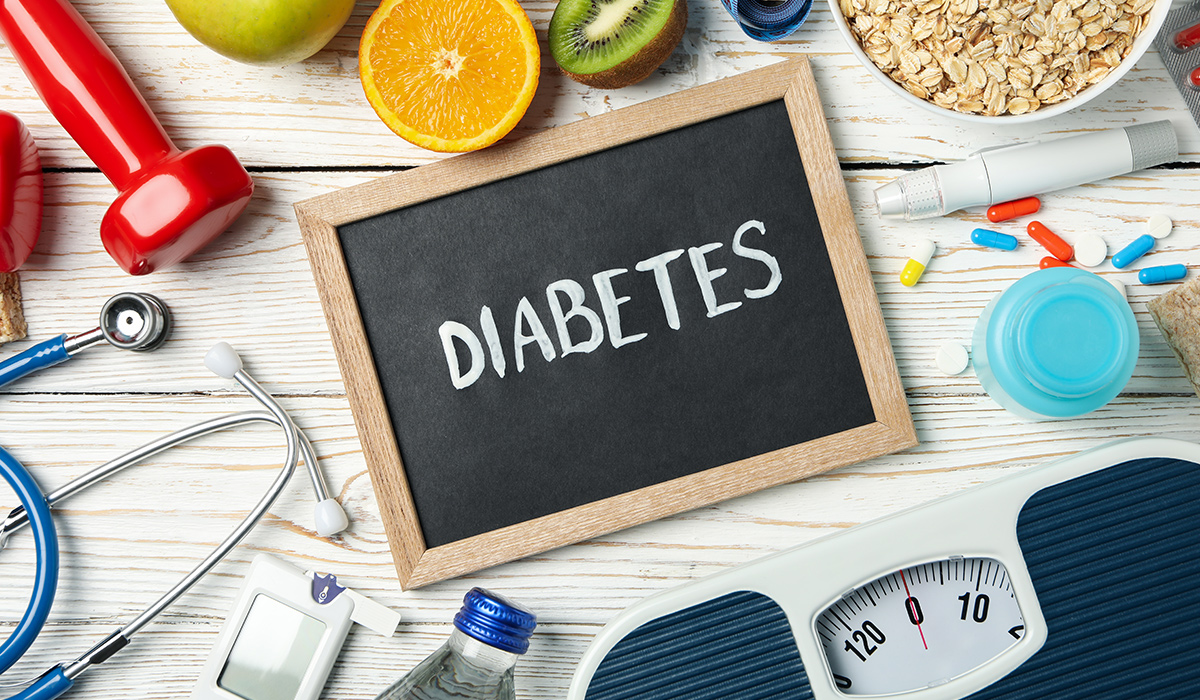
Diabetes is a disease involving elevated blood glucose levels. What are the causes of diabetes? How can it be treated?… read more »
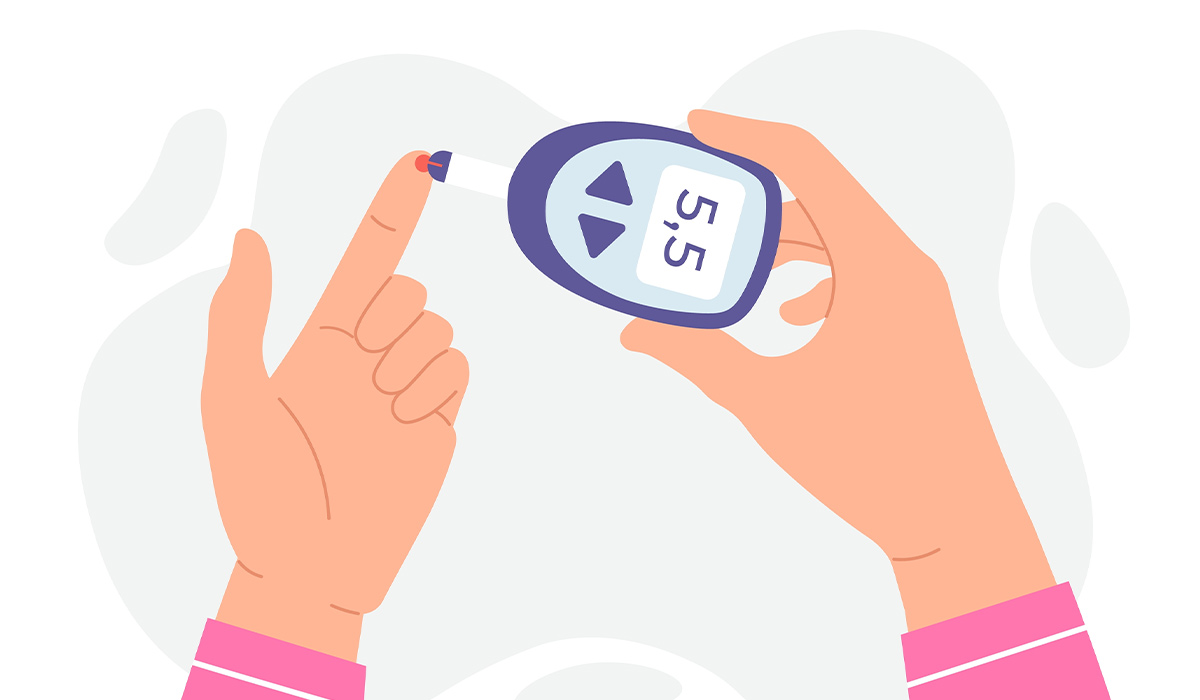
Normal blood glucose concentration is an important determinant of our health. Learn what are the symptoms of too high or… read more »

Gestational diabetes is a condition in which the blood sugar levels are high during pregnancy. If left untreated, it can… read more »

Hypoglycemia is a set of symptoms associated with a decrease in blood sugar levels, which disappears after the administration of… read more »
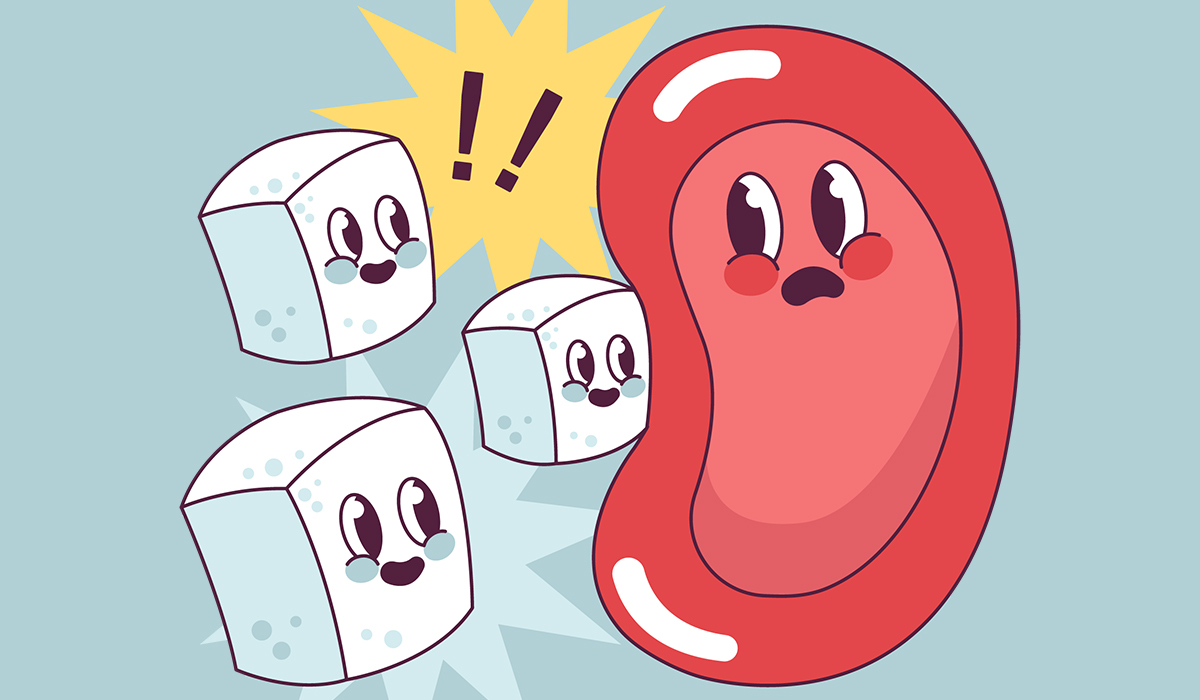
Prediabetes happens when the sum of sugar in your blood is higher than normal but not yet at the level… read more »

Sugar is a delicious food ingredient that gives you energy. Unfortunately, some types of sugar have been linked to dangerous… read more »

Did you know that intermittent fasting is a safe and effective way to lose weight? Learn the principles of intermittent… read more »
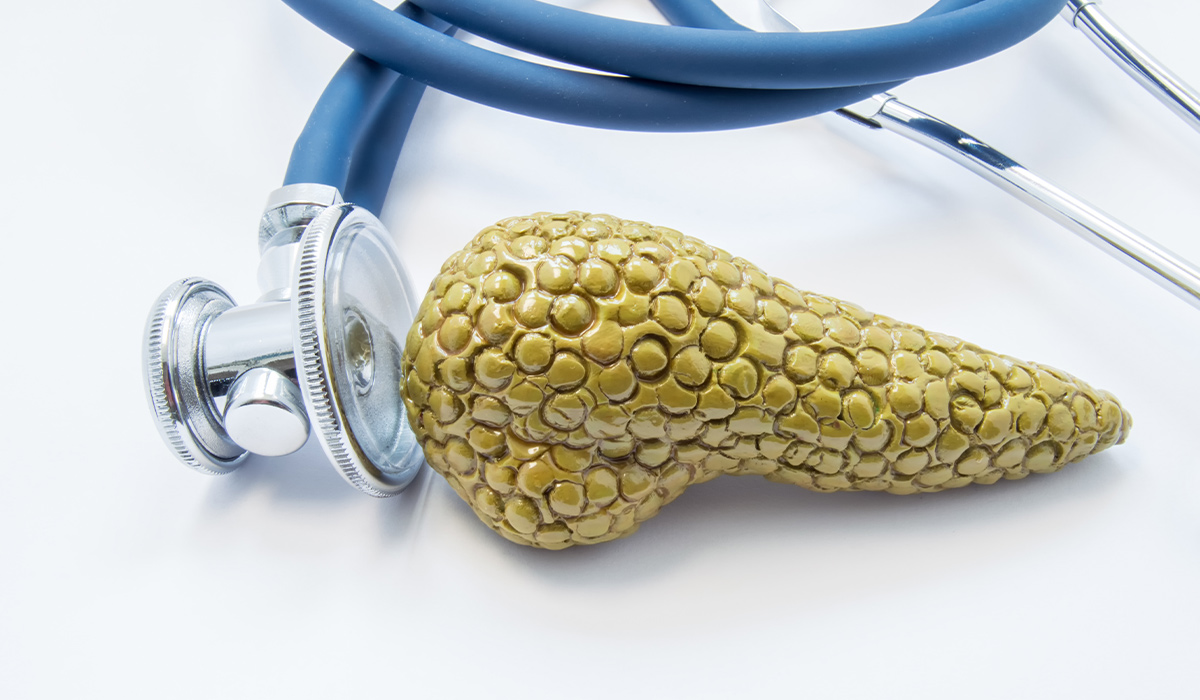
The first symptoms of pancreatic cancer are nonspecific, so it is difficult to make a quick diagnosis. Learn about pancreatic… read more »
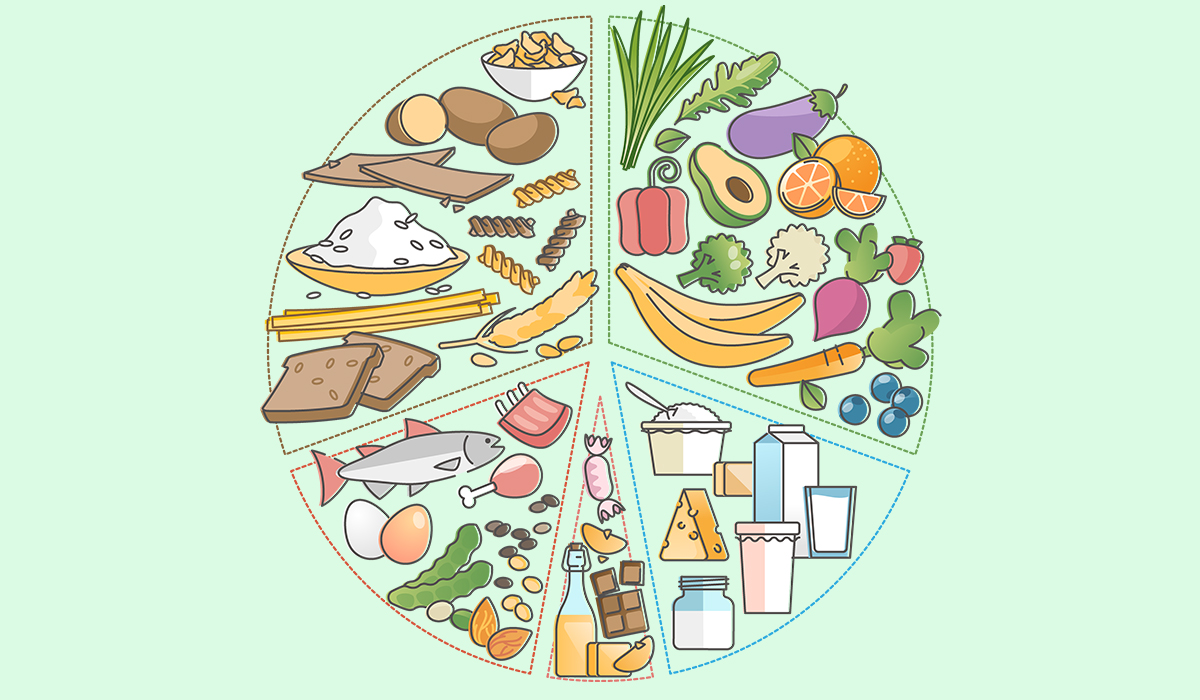
The DASH diet is a diet ideal for improving hypertension. In addition, it also has many other benefits. Learn about… read more »